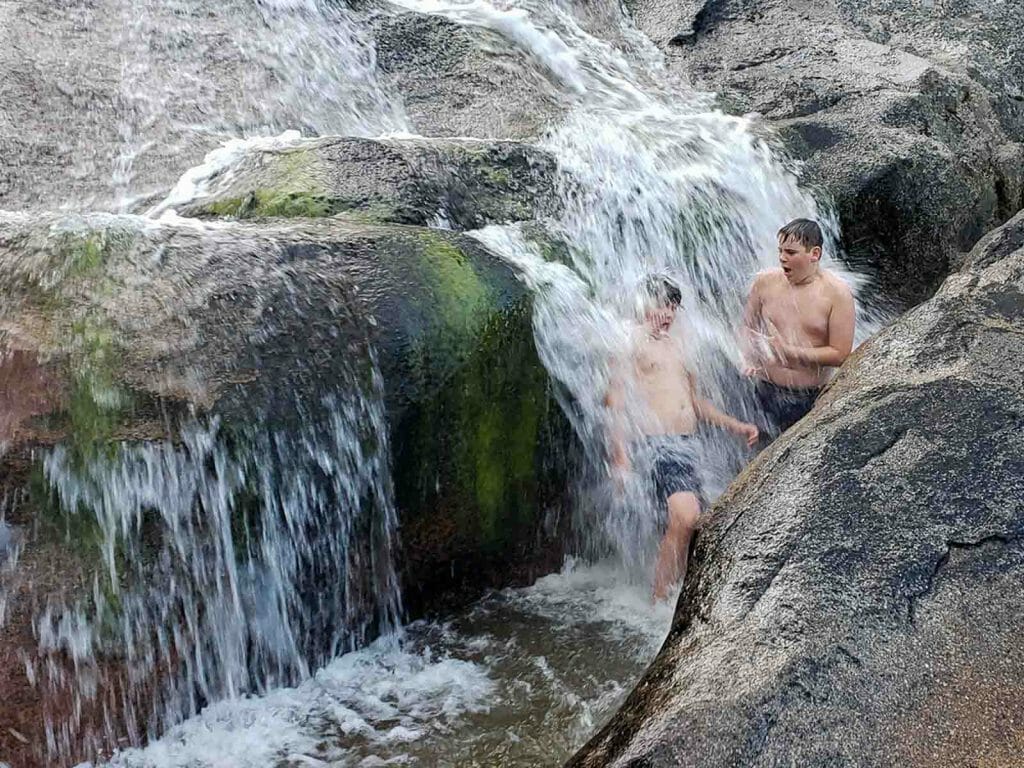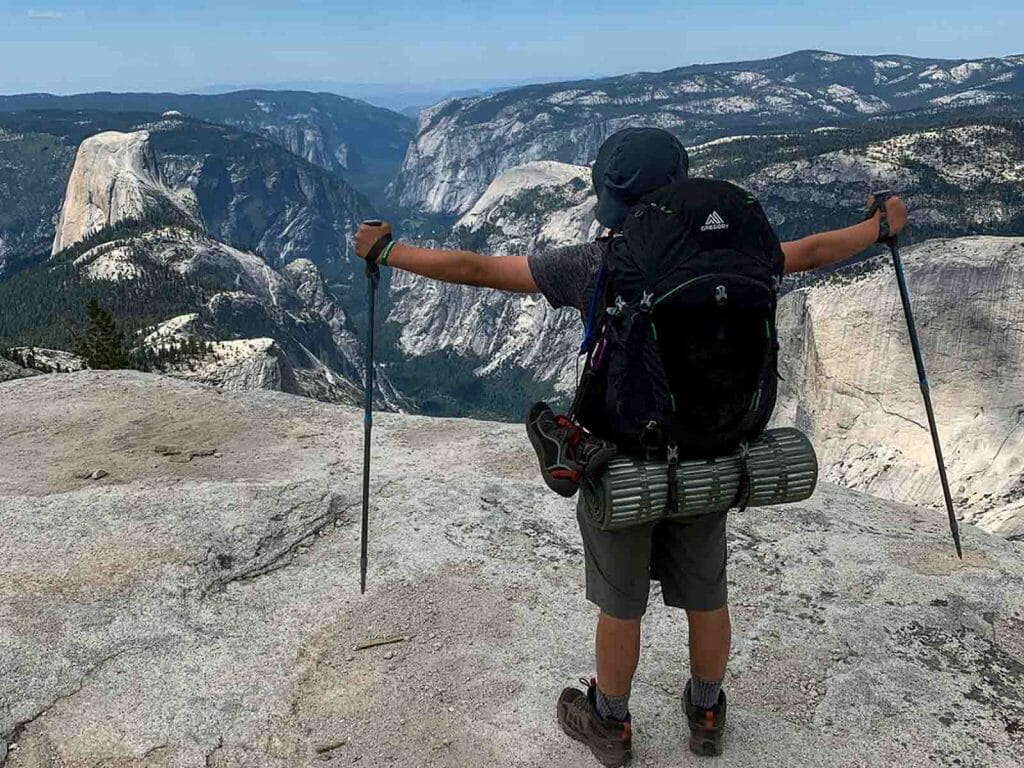Understanding Altitude Sickness: Causes, Symptoms, Preventative Measures, and Treatment
If you travel to an area of increased elevation without allowing time for your body to acclimate, there is a chance that you may experience altitude sickness. Altitude sickness, also known as elevation illness or mountain sickness, occurs in areas with lower oxygen levels and can be exasperated by dehydration, both of which coincide with higher altitudes. Common symptoms include nausea, headache, and fatigue, and can often be mistaken for other illnesses, such as food poisoning and even Covid-19. To help you better understand altitude illness, and in turn, avoid a misdiagnosis of its symptoms, we asked some of Lasting Adventures’ top guides to share their knowledge and insights about the causes of altitude sickness, how to identify it, and how to remedy it in the event that it happens to you.

How does altitude sickness occur?
Altitude sickness occurs when our bodies intake less oxygen than they’re used to. At higher altitudes where the air is “thinner,” less oxygen is present in the air. For example, at the highest elevation in Yosemite National Park, 13,000 feet, the air carries only 60% of the amount of oxygen that’s available at sea level. At 29,000 feet, the height of Mt. Everest, there is only about one-third of the available oxygen.
With less oxygen, your body can not function nearly as well, producing symptoms like a lack of energy, nausea and insomnia. Another factor in these symptoms is dehydration. At elevation, everything is working to dehydrate you. Being closer to the sun saps moisture from your skin and lips. Wind takes moisture away from your body in a similar way, and exertion will cause you to expel more moisture through your mouth from heavy breathing. Dehydration quickly causes symptoms like headache and dizziness.
How can I prevent or lessen the chances of getting altitude sickness?
The best way to prevent elevation illness is to acclimate your body to higher elevations prior to undertaking strenuous exercise. If you’re planning to hike a lot during your visit to Yosemite or another high-altitude destination, try to arrive at least two days before performing strenuous physical activity so your body can adjust to the lack of oxygen, particularly if you generally reside at or around sea level. This is a very effective method at preventing altitude sickness, and usually makes the difference needed to avoid getting sick from altitude. Another important preventative measure is to drink a lot of water—3 to 4 liters daily—and increase your consumption of carbohydrates. Nutrition and hydration are almost as important as acclimatization in avoiding elevation illness.

At what altitudes does elevation illness occur?
Altitude sickness most commonly occurs at elevations above 8,000 feet, with high altitude ranging from 8,000 to 12,000 feet. Anything above 12,000 feet is considered very high altitude, and elevations above 18,000 feet are considered extreme. When hiking at extreme altitudes, it is common practice to carry an oxygen tank to aid in replenishing your body with oxygen. The higher the elevation, the more at-risk a person becomes to symptoms of altitude sickness.
Who is at-risk with altitude sickness?
Anyone can be susceptible to altitude sickness, and factors like age, sex and general health often don’t affect who gets it. That said, higher risk may be attributed to living in a low-altitude location, being pregnant, having a lung or heart condition, or previous experience with altitude sickness. It effects everyone differently with symptoms ranging from mild to severe. Many people experience little to no issues at altitude.
What are the main forms of altitude sickness?
The three main types of altitude sickness are acute mountain sickness (AMS), high altitude cerebral edema (HACE), and high altitude pulmonary edema (HAPE). AMS is the most common and unpleasant form of elevation illness, but is usually not life-threatening. HAPE and HACE are less common, but can be life-threatening.
Acute Mountain Sickness (AMS) — This is the most common form of altitude illness, and the least dangerous. Symptoms of AMS can feel like a hangover – dizziness, headache, muscle aches, nausea.
High Altitude Pulmonary Edema (HAPE) — HAPE happens when fluid enters the lungs. It can be life threatening and requires immediate medical attention.
High Altitude Cerebral Edema (HACE) — The rarest and most severe form of mountain sickness, HACE is a buildup of fluid in the brain due to the physiological effects of traveling to high altitude. It is a serious condition that can be very dangerous, even life threatening, if not immediately treated.
Symptoms to watch out for:
Mild elevation sickness can resemble other illnesses, such as the flu, food poisoning, or even Covid-19. These symptoms include:
- Headache
- Dizziness
- Nausea
- Vomiting
- Fatigue
- Shortness of breath
- Trouble sleeping
- Loss of appetite

Recognize and treating the different forms of altitude sickness:
If you suffer from AMS, chances are you’re feeling a nauseous and have a mild to severe headache. Fatigue may be another strong indicator of this mild form of altitude sickness. AMS is treated by stopping your ascent to acclimatize, and descending if the symptoms do not resolve.
HACE is most visibly indicated by ataxia, or loss of balance, along with altered mental status. If HACE is suspected, an immediate, rapid descent is necessary.
HAPE, the cause of most deaths from high-altitude illness, can develop gradually and be hard to recognize. Be suspicious of a decreased ability to exercise, shortness of breath, unanticipated fatigue, and elevated heart rate and respiratory rate. Cyanosis (bluish skin) or audible wet lung sounds are dangerous and obvious signs. Like HACE, immediate treatment for HAPE should be a rapid descent. Administering oxygen can also help.
Altitude sickness usually sets in within 12 to 24 hours of reaching a higher elevation and then get better within a day or two as your body acclimates. In more moderate cases, symptoms might feel more intense, and worsen with time rather than improving. In such cases, over-the-counter medications usually do not aid in recovery. Moderate altitude sickness is usually associated with shortness of breath and fatigue, as well as loss of coordination, a severe headache that doesn’t get better with medication, and tightening in your chest.
The development of severe forms of altitude sickness, such as HAPE or HACE, is rare below high elevations. With Yosemite’s highest altitude being 13,000 feet, visitors should be less concerned, but still aware of these cases. When these forms are experienced, they are usually associated with confusion, shortness of breath even at rest, loss of balance, a phlegmy cough, and in the most extreme cases, eventually a coma. Rapid descent and immediate medical attention is critical to a successful recovery.
What to do if you suffer from altitude sickness?
The first and most obvious step in treating altitude sickness is to stop the ascent and let the body acclimate, then descend if your condition does not improve. Symptoms of mild altitude sickness can also be associated with dehydration, so drinking water can also improve conditions. For more severe forms of altitude sickness, victims should administer a rapid descent and seek immediate medical attention.
How worried should I be about altitude sickness in Yosemite?
Elevation illness is something to be aware of when visiting Yosemite, but as long as you take the proper precautions—ample acclimatization, hydration, and nutrition—you don’t need to worry. Yosemite Valley sits at 4,000 feet above sea level and is not an area of concern for altitude sickness. When hiking in Yosemite’s higher elevations, such as Tuolumne and areas around the rim of the Valley, you will generally be above 8,000 feet and should be conscious of your body’s condition. Listen to your body, pay close attention to your senses, take the necessary precautions and you should be able to safely enjoy your stay.


